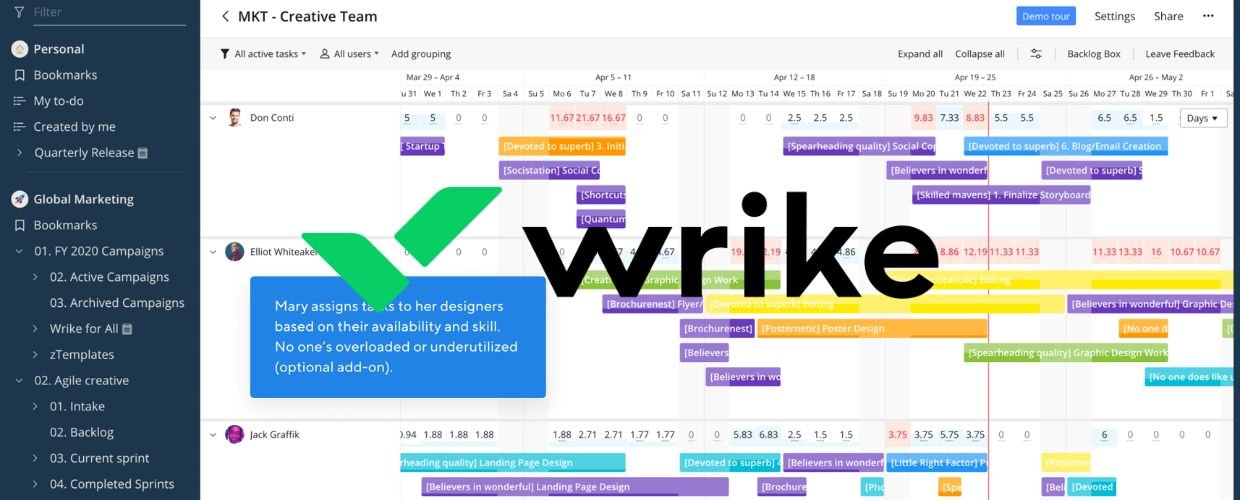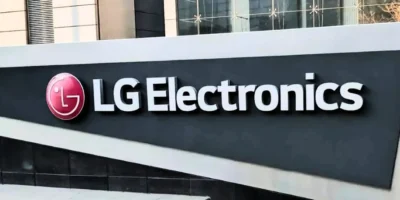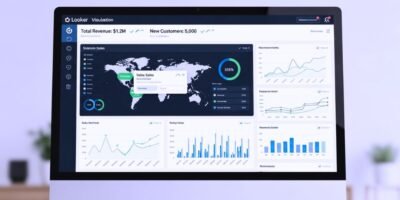In today’s fast-paced and interconnected business environment, efficient project management and collaboration are crucial for success. This article will delve into what Wrike is, its key features and functionalities, and the benefits it provides to businesses.
What is Wrike?
Wrike is a cloud-based project management and collaboration platform that helps teams and organizations manage their projects, tasks, and workflows. With its intuitive interface and robust features, the platform empowers teams to collaborate, track progress, and achieve their goals efficiently.
Wrike, a leading project management and collaboration platform, offers a comprehensive solution to streamline workflows, enhance team collaboration, and drive productivity. From small groups to large enterprises, the software solution provides a centralized hub where teams can plan, execute, and monitor their work seamlessly and organize.
Recommendations and Ratings
EXPERT RECOMMENDATIONS
Overall
-
Easy-of-Use - 80
-
Feature and Functionality - 85
-
Customer Support - 90
-
Setup and Integration - 80
-
Value of Money - 80
User Review
4.33 (24 votes)Key Features and Functionalities of Wrike
Wrike offers many features and functionalities to optimize project management and team collaboration. Let’s explore some of its key features.
Task Management and Planning
It enables teams to create and manage tasks effectively. Users can break down projects into smaller tasks, assign responsibilities, set deadlines, and track progress. The platform offers various views, such as Kanban boards, Gantt charts, and custom workflows, allowing teams to manage tasks and visualize project timelines.
Real-time Collaboration
Wrike facilitates seamless collaboration among team members, regardless of their location. Users can create and share real-time documents, files, and comments, fostering effective communication and ensuring everyone stays updated on project developments. With its collaboration features, teams can work together efficiently, exchange ideas, and provide feedback without requiring lengthy email threads or disjointed communication channels.
Project Visibility and Reporting
It provides teams with clear visibility into project status and progress. Managers can track project timelines, monitor task dependencies, and identify potential bottlenecks or resource constraints. The platform offers customizable dashboards and reporting features that allow users to generate insightful reports, visualize data, and make informed decisions based on real-time project information.
Resource Management
Wrike helps businesses optimize resource allocation and workload distribution. Users can view team members’ availability, assign tasks based on skill sets and capacity, and balance workloads to avoid overloading individuals or causing delays. With resource management features, teams can ensure efficient utilization of resources, enhance productivity, and deliver projects on time.
Integrations and Automation
The software solution integrates with various third-party applications and tools, allowing teams to work seamlessly across platforms. The platform also offers automation capabilities, enabling teams to automate repetitive tasks, notifications, and updates. Integrations and automation streamline workflows, reduce manual effort, and increase efficiency.
Benefits of Wrike
Wrike offers numerous benefits that help businesses improve productivity, collaboration, and project management. Let’s explore some of its key benefits.
Enhanced Team Collaboration
The platform provides a centralized platform where teams can collaborate, share information, and work together in real-time. By fostering effective communication and collaboration, Wrike enables teams to align their efforts, coordinate tasks, and achieve their objectives more efficiently.
Streamlined Workflows
With Wrike, businesses can streamline workflows and eliminate manual, time-consuming processes. Its automation capabilities reduce administrative tasks, allowing team members to focus on high-value activities and project deliverables.
Improved Project Visibility
Wrike offers comprehensive project visibility, allowing stakeholders to monitor progress, identify potential issues, and make informed decisions. Real-time dashboards, reports, and analytics provide insights into project status, resource allocation, and performance metrics, enabling managers to mitigate risks and ensure project success.
Scalability and Flexibility
The platform caters to businesses of all sizes and industries, offering scalability and flexibility to adapt to evolving needs. Whether managing small projects or complex enterprise initiatives, Wrike provides the tools and features to support teams throughout their growth journey.
Time and Cost Savings
By streamlining workflows, automating processes, and enhancing collaboration, Wrike helps businesses save valuable time and reduce costs. Teams can work more efficiently, avoid duplication of efforts, and minimize project delays, resulting in improved productivity and cost-effectiveness.
Conclusion
Wrike is a powerful project management and collaboration platform that enables businesses to optimize their workflows, enhance team collaboration, and drive productivity. With task management, real-time collaboration, project visibility, resource management, and integrations, the platform empowers teams to work efficiently and achieve their project goals. By leveraging Wrike’s capabilities, businesses can streamline processes, improve communication, and deliver successful projects in a dynamic and competitive business landscape.













